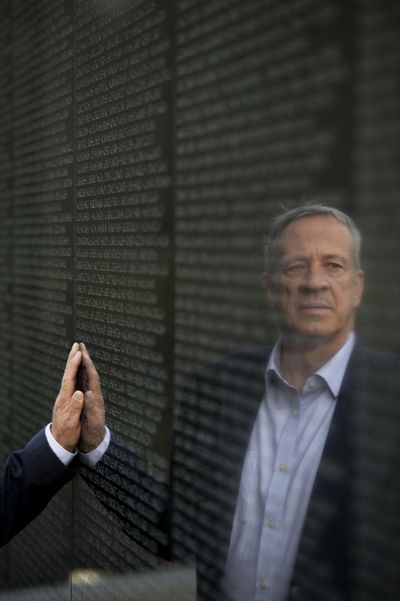For the man behind the Vietnam wall, the war’s worst moment did not come in combat

The worst day in Vietnam for Jan Scruggs did not come in battle. It did not come in a jungle ambush, or a massive night time enemy assault, or a North Vietnamese artillery barrage.
It came on a quiet Wednesday, at a place called Fire Base Nancy, near Xuan Loc, just east of Saigon.
It was Jan. 21, 1970. Scruggs, 19, had recovered from the enemy grenade attack eight months earlier that had peppered him with shrapnel and nearly killed him. He was relaxing in his one-man hooch, for the moment away from the bloody grind of the war.
Back home, Vietnam was off the newspaper front pages. The United States had started pulling out its troops. Scruggs, who would go on to create the Vietnam Veterans Memorial, had three months left on his one-year tour.
About 300 paces away, a mortar platoon just back from a mission was unloading ammunition from a truck.
Suddenly, the ammo began to detonate.
Scruggs bolted from his hooch to help and was among the first on the scene.
What greeted him was a horror show.
Soldiers were on fire. Severed limbs were strewn about. He went to help one man, but a buddy told him not to bother. The injured soldier had a hole in his head the size of a golf ball.
Twelve men were dead. “Twelve guys, their brains and intestines all over the place,” he would recall years later. “Twelve guys in a pile.”
It was a scene that would haunt him for years, a cruel accident of war – neither friendly fire, nor enemy fire.
“These are the things that happen in wars,” he said. “They’re awful. Awful.”
And it was that day, perhaps more than any other, that spurred Scruggs to lead the drive to build the Wall, which has become a mainstay of Memorial Day celebrations in Washington.
Scruggs, who recently survived another brush with death with a serious heart infection, is now technically retired from the Vietnam Veterans Memorial Fund, which he founded to build the famous memorial.
He left the fund in 2015 and moved on to other projects – chiefly the effort to build a memorial to veterans of the global war on terror.
But he remains the face of the black stone wall that bears the names of the men from Fire Base Nancy and 58,000 other Americans claimed by the war.
In 2017, it was visited by more than 5 million people.
The son of a milkman and a waitress, Scruggs remains an affable man, charming and cynical, with dry sense of humor and a salesman’s persistence. He is still at ease from the podium, before the TV cameras and with other Vietnam veterans.
He is neither a flag waver nor a flag burner and appeals to people on both sides of the bitter Vietnam War debate.
He doesn’t dwell on his own battle experiences. “I just saw kind of an average amount of combat,” he said. “Most people had a much worse time than me.”
A working-class kid from Bowie, Maryland, he came out of a brutal war in one piece, and the memorial he helped envision is a moving national tribute to the sacrifice of his generation.
“The Wall gave people the license to mourn publicly,” Scruggs said when his retirement was announced. “There’s something very profound about it, feeling the connection between the living and the dead, feeling the way we still love and care for people.”